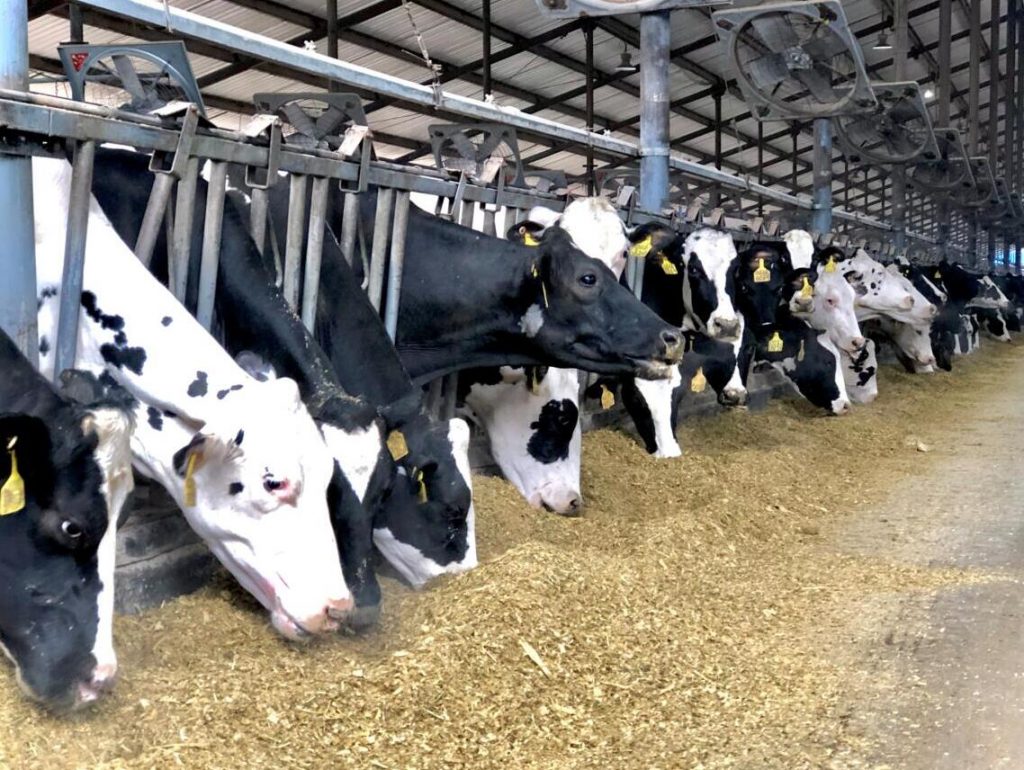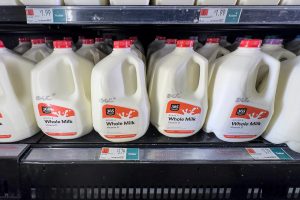
2021 production and marketings were estimated at 227.7 billion and 226.7 billion pounds, respectively, up 400 million pounds on both. If realized, 2021 production would be up 4.5 billion pounds or 2.0% from 2020.
Dairy product price forecasts were raised on improving demand, both domestically and in international markets. Prices of cheese, butter, nonfat dry milk, and whey were raised, boosting both Class III and Class IV milk prices.
Look for a 2021 Class III price average of about $17.10 per hundredweight, up 35 cents from last month’s estimate, and compares to the 2020 average of $18.16 and $16.95 in 2019.
The 2021 Class IV milk price is now estimated to average $15.15, up 70 cents from a month ago, and compares to $13.49 in 2020 and $16.30 in 2019.
Exports strong
The U.S. had a good February. StoneX Dairy reported that U.S. milk equivalent exports were up 16.3% from February 2020 when adjusted, and broker Dave Kurzawski talked about it in the April 12 “Dairy Radio Now” broadcast.
Nonfat dry milk-skim milk powder exports hit 157.8 million pounds, up 36.1% from a year ago, adjusted for the Leap Day, and up 11.2% year to date. Kurzawski said that powder exports to Mexico were up 27%.
Dry whey exports were good, thanks to China likely being the largest buyer of U.S. dry whey right now, up 22% from a year ago, according to Kurzawski.
Cheese exports totaled 66.5 million pounds, up just 1.1% from a year ago but down 3.9% for the two-month period. However, February Cheddar exports were up 23.7%, according to Kurzawski.
Butter exports, which pale in comparison to powder, for example, totaled 7.6 million pounds, but were up a hefty 120.4% from a year ago and up 102.3% year to date.
Kurzawski admitted that we are comparing against some weaker numbers a year ago and that may account for some of the percentage increases this year. However, “the absolute numbers are above our expectations,” he said.
Also, the much talked about shipping logistic problems seemed to have little impact, he said, and February shipments showed strength even as there was one less day for deliveries compared to the 2020 leap year.
The discussion of late has been on rising foodservice demand, he said, and retail demand remains consistent, though he cautioned, “We’re still in this pandemic. We don’t know if we will have another shutdown, retailers know that and want to keep their shelves stocked. We may be exporting more than we think, but they’re all good signs for demand.”
Planting underway
The Agriculture Department’s Crop Progress report shows 4% of the U.S. corn crop was in the ground, as of the week ending April 11. That’s 1% ahead of a year ago as well as the latest five-year average. The data is from 18 states that planted 92% of 2020 corn acreage.
Prices strengthen
Cash 40-pound block Cheddar cheese closed the second Friday of April at $1.83 per pound, up 5.50 cents on the week. It was an impressive 77.50 cents above a year ago when it fell 9.50 cents to $1.0550, as the COVID effect enlarged its hold.
The 500-pound Cheddar barrels jumped 10.75 cents on Friday to close at $1.6925 per pound, up 18 cents on the week and 69.25 cents above a year ago when they hit bottom at $1 per pound. They also closed the gap a little Friday, creeping to a spread of 13.75 cents below the blocks. Trades included 21 loads of block and 13 of barrel for the week.
Monday’s traders took the blocks up 3 cents on 8 trades, to $1.86, highest CME price since Jan. 14, 2021. But, they fell 5.50 cents Tuesday on 2 offers, to $1.8050.
The barrels shot up 7.25 cents Monday on 10 trades, hitting $1.7650, highest since Nov. 12, 2020, but gave up 4.50 cents Tuesday, rolling back to $1.72, on 9 trades. They are now 8.50 cents below the blocks.
Block and barrel cheese producers reported strengthening food service demand last week, according to Dairy Market News. Some barrel producers said that April and May interests kept them from bringing loads to the spot market. Some Cheddar and jack cheese makers reported similar buyer interest.
Cheese production is steady to ticking higher in plants throughout the Midwest, though spot milk availability varies. Some milk prices were above the previous few weeks but some were $5 under Class. A number of contacts suggest growing foodservice demand has kept milk availability a little tighter and “cheese market tones are steady to slightly bullish,” says DMN.
Western demand for retail cheese held steady last week. Foodservice cheese demand is trending upwards with some contacts reporting that buyers are purchasing farther out to hedge against price increases.
More children are returning to full-time in-person schooling so demand for dairy has been increasing. Plenty of milk is available and cheese producers are running at or near capacity while cheese inventories are mixed.
CME butter fell to $1.8150 per pound last Wednesday, but rallied Thursday and Friday and closed at $1.88, up 3.50 cents on the week and 63.25 cents above a year ago. There were 23 trades of butter recorded for the week.
The butter was bid up 2.50 cents Monday to $1.9050, highest CME price since June 10, 2020, but it eased back a penny Tuesday to $1.8950.
Central butter producers tell DMN that the culmination of spring holidays did not move the needle regarding general week-to-week activities.
Cream multiples were similar to previous weeks, though cream was still tighter than it was throughout most of first quarter. Still, butter makers report there are cream multiples in the low/mid 1.20s, but they are becoming more limited. Butter plant managers say food service sales have maintained strength for three to four consecutive weeks but retail sales are on a steady seasonal decline.
With considerable production downticks noted in the February Dairy Products report, butter market tones received an additional shot in the arm, says DMN. Since the onset of the new crop butter rule on March 1, market tones have been in mostly bullish territory.
Meanwhile, cream is ample in the West and some of it is moving to eastern markets. Ice cream, dips, and whips are pulling some fat away from churns but butter production is active, and inventories remain stable.
Foodservice demand continues to flourish; restaurant sales are especially strong. Retailers are refilling cooler shelves after consumers took advantage of spring holiday butter promotions. Healthy export interest also persists, says DMN.
Grade A nonfat dry milk finished Friday at $1.2050 per pound, up 1.50 cents on the week and 30.75 cents above a year ago, with 7 cars finding new homes on the week.
Monday’s powder gained a penny, hitting $1.2150, highest since Feb. 12, 2020, but it gave back a penny Tuesday, slipping to $1.2050.
CME dry whey saw its first price decline since March 10 last week and slipped to a Friday close of 63 cents per pound, 3 cents lower on the week but 28 cents above a year ago. There were two trades on the week at the CME.
The whey was up 2 cents Monday and added a penny Tuesday, climbing back to 66 cents per pound.
A quick footnote. There’s a lot of concern about growing outbreaks of African Swine Fever in China, according to StoneX Dairy, “which has implications for dairy as well as grain markets.”

























